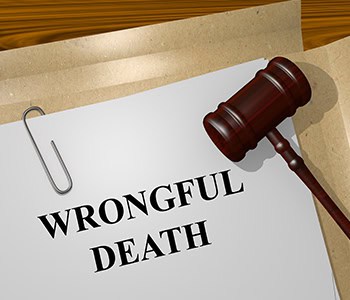The unexpected death of a loved one is a devastating experience, especially when it’s caused by someone else’s negligence or intentional misconduct. In California, surviving family members may be able to pursue justice and compensation through a wrongful death lawsuit. Understanding the process is essential for navigating the legal system during such an emotionally challenging time. Below, we break down everything you need to know about filing a wrongful death lawsuit in California—from eligibility and timelines to compensation and trial proceedings.
What Is a Wrongful Death Lawsuit?
A wrongful death lawsuit is a civil action brought when a person dies due to the legal fault of another person or entity. In California, these lawsuits are governed by the California Code of Civil Procedure § 377.60, which allows certain survivors of the deceased to seek damages for their losses.
Unlike criminal cases, which aim to punish the offender, wrongful death cases seek financial compensation for the surviving family members to address both economic and non-economic impacts of their loss.
Who Can File a Wrongful Death Lawsuit in California?
California law strictly defines who is allowed to file a wrongful death claim. Eligible parties include:
- The decedent’s surviving spouse or domestic partner
- Children of the deceased
- Grandchildren (if the deceased person’s children are also deceased)
- Other minor dependents who lived with the deceased for at least 180 days and were financially dependent
- Anyone entitled to inherit under California’s intestate succession laws (if there is no surviving spouse, partner, or children)
Multiple parties may file a joint wrongful death lawsuit in California, or one party may file on behalf of others.
Common Causes of Wrongful Death
A wrongful death lawsuit in California can arise from various types of incidents, including but not limited to:
- Car accidents
- Motorcycle and truck collisions
- Pedestrian or bicycle accidents
- Medical malpractice
- Defective products
- Construction or workplace accidents
- Criminal acts such as assault or homicide
The common thread in all these cases is that someone else’s negligence, recklessness, or intentional action caused the death.
Statute of Limitations
Timing is crucial. In California, the statute of limitations for filing a wrongful death lawsuit is generally two years from the date of death. If the claim is filed after this period, the court is likely to dismiss it, regardless of its merits.
There are exceptions:
- Medical malpractice cases may have a different statute, generally three years from the injury or one year from the date of discovery.
- Government entity claims (e.g., a city bus accident) require a special claim to be filed within 6 months of the incident.
It’s vital to consult an attorney early to avoid losing the right to sue.
Proving Fault in a Wrongful Death Case
To succeed in a wrongful death lawsuit in California, the plaintiff must prove the following four elements:
- Duty of Care – The defendant owed a legal duty to the deceased.
- Breach of Duty – The defendant failed to fulfill that duty, either through action or inaction.
- Causation – The breach of duty directly caused the death.
- Damages – The survivors suffered measurable damages as a result of the death.
Evidence such as police reports, medical records, expert testimony, and witness accounts is crucial to proving these elements.
Types of Damages Available
Damages in a wrongful death lawsuit in California can be categorized into two broad types:
- Economic Damages
These are tangible, financial losses that can be quantified, including:
- Funeral and burial expenses
- Loss of the deceased’s future income
- Medical bills related to the final illness or injury
- Loss of benefits (pensions, health insurance, etc.)
- Value of household services the deceased provided
- Non-Economic Damages
These are intangible losses, which can be more difficult to calculate:
- Loss of love, companionship, and emotional support
- Loss of guidance and nurturing (especially for children)
- Loss of consortium (for spouses or partners)
There is no cap on damages in most wrongful death cases in California, except for medical malpractice lawsuits, which are capped at $500,000 for non-economic damages under the Medical Injury Compensation Reform Act (MICRA).
The Legal Process: Step-by-Step
Here’s an overview of the typical steps involved in a wrongful death lawsuit in California:
Step 1: Case Evaluation & Consultation
The process begins with a consultation with a qualified wrongful death attorney. During this meeting, you’ll discuss the facts of the case and determine eligibility and potential value.
Step 2: Investigation
Your legal team will gather evidence, speak with witnesses, review records, and work with experts to build the strongest possible case.
Step 3: Filing the Lawsuit
If a settlement cannot be reached early, your attorney will file a formal complaint in the appropriate court. The defendants are served and given a chance to respond.
Step 4: Discovery Phase
Both sides exchange evidence through a process called discovery. This includes depositions, interrogatories, document requests, and more.
Step 5: Negotiation & Mediation
Many wrongful death lawsuits in California settle before going to trial. Mediation may help reach an agreement, saving time and reducing emotional stress.
Step 6: Trial (if needed)
If no settlement is reached, the case will go to trial. A judge or jury will hear arguments, review evidence, and determine whether the defendant is liable—and if so, how much in damages should be awarded.
How Long Does a Wrongful Death Lawsuit Take?
The duration of a wrongful death lawsuit in California varies based on complexity, the number of parties involved, and whether the case goes to trial. Some cases resolve in a few months, while others may take one to three years or more.
Factors that may extend the timeline include:
- Disputes over liability
- High-value damage claims
- Insurance company resistance
- Multiple defendants or complicated fact patterns
Do You Need an Attorney?
While it’s legally possible to file a wrongful death lawsuit in California without a lawyer, doing so is not recommended. Wrongful death cases are emotionally charged and legally complex. An experienced attorney can:
- Evaluate the strength of your claim
- Meet all filing deadlines
- Handle negotiations with insurance companies
- Represent you at trial if needed
- Maximize your compensation
Most wrongful death attorneys work on a contingency fee basis, meaning they don’t get paid unless you win your case.
Important Considerations
Before proceeding with a wrongful death lawsuit in California, keep these points in mind:
- Only one wrongful death claim is allowed per case, so all eligible survivors must be included in a single action.
- Settlements are often split among surviving family members based on the level of dependency and relationship to the deceased.
- Emotional healing is just as important as financial recovery—seek support from counselors or support groups during the legal process.
Final Thoughts
A wrongful death lawsuit in California offers a way for grieving families to seek justice, hold negligent parties accountable, and recover financial support lost due to the death of a loved one. Though no amount of money can replace a life, fair compensation can provide a sense of closure and stability.
If you believe you may have a wrongful death claim, consult a knowledgeable attorney as soon as possible. With the right legal guidance, you can navigate this difficult process with clarity, strength, and confidence.





























